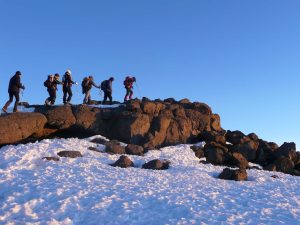LIST OF TANZANIA NATIONAL PARK
Here’s a roll call of Tanzania’s many fantastic national parks, including what each is most famous for and where to find them. We did the fun exercise of limiting ourselves to just one sentence per park, which isn’t easy given how we usually want to wax lyrical about them!
| Park | What it’s known for | Location in the Country |
| Arusha National Park | Home to Mt Meru (4,565 m) | NE Tanzania, near the city of Arusha |
| Gombe Stream National Park | Home to chimpanzees | NW Tanzania, onshore of Lake Tanganyika |
| Jozani Chwaka Bay National Park | Home to Zanzibar red colobus | On the island of Zanzibar |
| Katavi National Park | Seasonal Lake Katavi and Lake Chada floodplains | Western Tanzania, very remote |
| Mt Kilimanjaro National Park | Home to Africa’s highest mountain, Mt Kilimanjaro! | NW Tanzania, near Kenyan border |
| Kitulo National Park | A great many flowering plants, incl. 45 varieties of orchids | South Tanzania, in the mountains |
| Lake Manyara National Park | The incredible density of elephants | North Tanzania, close to Arusha |
| Mahale Mountains National Park | Of the lake’s 193 fish species, 90% are endemic | Western Tanzania, onshore of Lake Tanganyika |
| Mikumi National Park | Home to baobabs and tree-climbing lions | Eastern Tanzania |
| Mkomazi National Park | Home to African wild dogs and black rhinos | NE Tanzania, near Kilimanjaro |
| Ruaha National Park | Largest protected area in East Africa | Central Tanzania |
| Rubondo Island National Park | Offers incredible bird-spotting | NW Tanzania, on an island in Lake Victoria |
| Saadani National Park | Can see wildlife lolling on the beach | Eastern Tanzania, on the coast |
| Saanane Island National Park | Smallest national park in East Africa | NW Tanzania, on an island in Lake Victoria |
| Serengeti National Park | An enormous park that’s home to the Great Migration | North Tanzania, touches Kenyan border |
| Tarangire National Park | Allows walking safaris | North Tanzania, very accessible |
| Udzungwa Mountains National Park | Boasts the second-largest biodiversity in Africa! | Central Tanzania |






